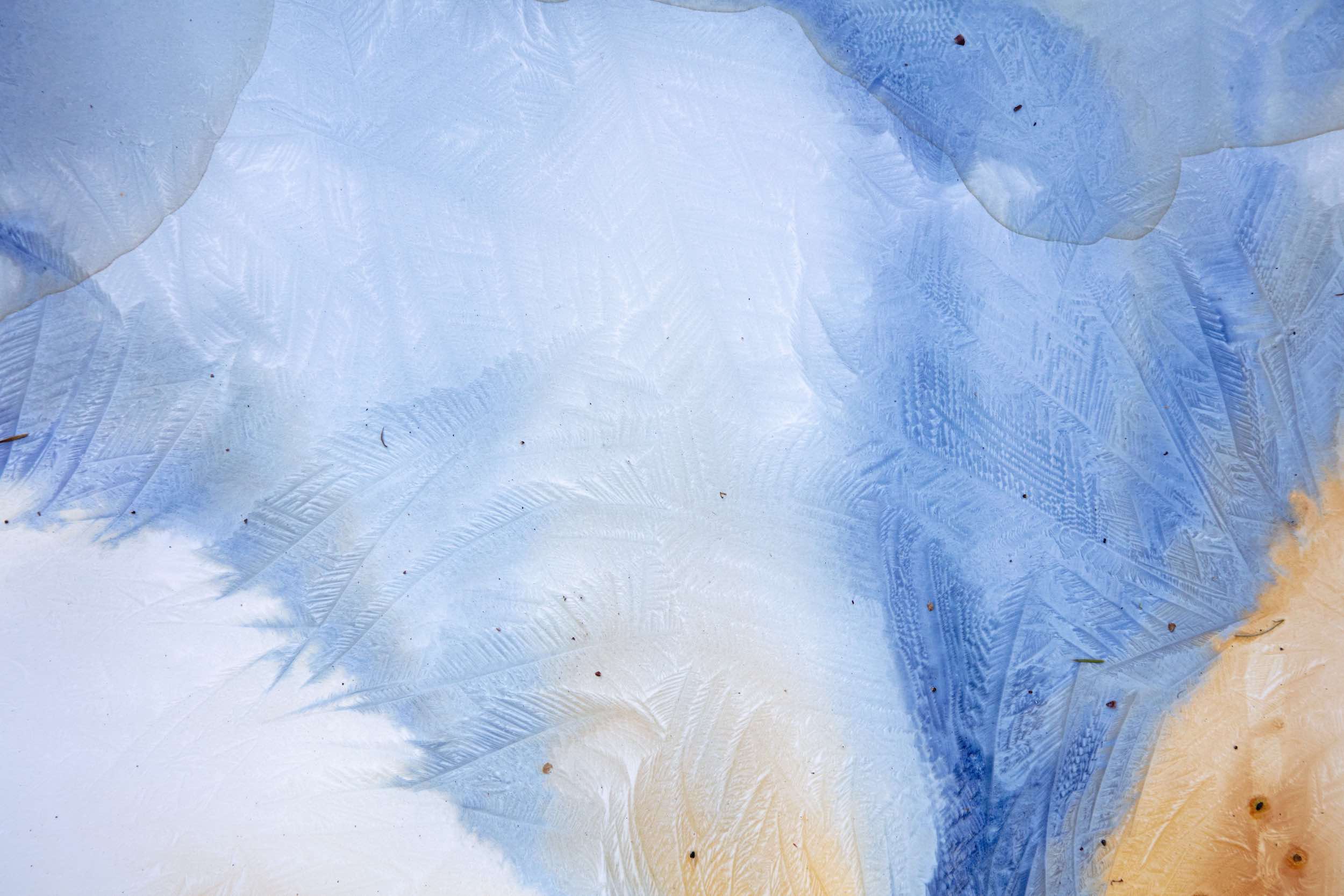All images © Meghann Riepenhoff.
The unique, spectral works by the American artist, produced in locations such as the Great Salt Lake and Walden Pond, speak to time, impermanence and the sublime
Photography’s relationship to the shoreline was established in 1841, when Anna Atkins began blueprinting all the plant specimens the English countryside had to offer. Her monumental undertaking, which resulted in Photographs of British Algae: Cyanotype Impressions (1843), not only pioneered the evolution of a then-innovative photographic technique, but renewed modern ideas regarding natural history and ecological conservation.
Of all of Atkins’ heirs, few stand out as distinctly as American photographer Meghann Riepenhoff. Where the Victorian botanist used materials from the shoreline to make her cyanotypes, Riepenhoff uses it as her subject and process. Ever since she noticed the formation of crystals in pigments on a very cold day on the Puget Sound, Washington, back in 2014, she has sought to capture the mercurial personalities of water. Produced by introducing photographic paper into aquatic landscapes – along the shore, across branches or beneath snow – Riepenhoff’s cyanotypes share a similar magic with Atkins’. They are made with Mother Nature, the great collaborator.
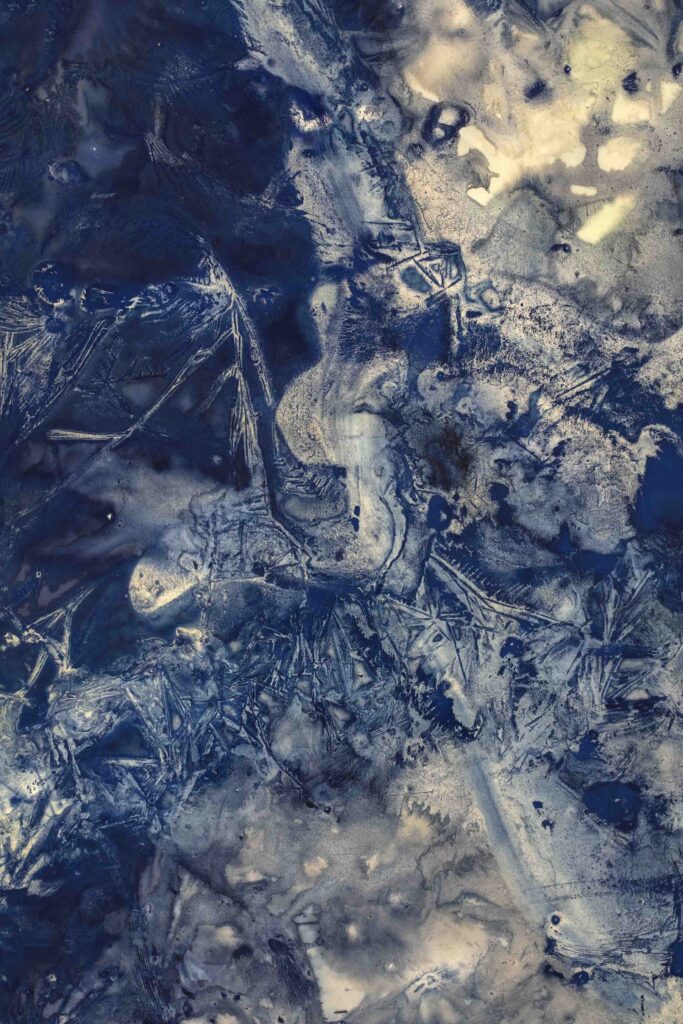
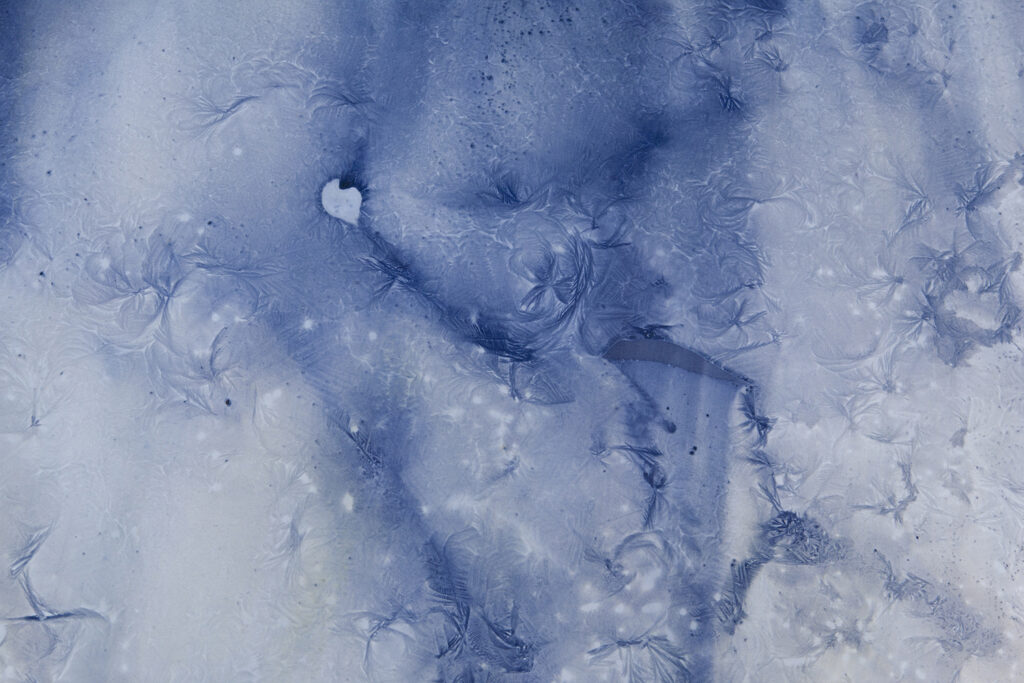
“Atkins was nearly erased from history several times, mostly because she was a woman,” says Riepenhoff. “For me, her legacy is one of originality, of pursuing a vision with rigour, persistence and care.” Indeed, these are very words which come to mind when perusing Ice, Riepenhoff’s immaculately conceived title with Radius Books. A large object with a blind debossed cover bearing frosted imprints, it contains unique cyanotypes made in freezing landscapes between 2018 and 2021. The crisp printing shows off Riepenhoff’s icy brilliance, flaunting fantastical, near-hallucinatory forms, shapes and colours. Yet the book also offers a sense of tranquillity inside our internet-based image culture aquake with shareability and artificialness.
“I think of my work as a catalyst for connection. It is an opportunity to visualise and consider how direct, essential and innate our relationship to our environment is. We are our environment.”
“Water, wind, pH, temperature, humidity – all of these factors show up in the formation of the crystals,” explains Riepenhoff. “On a microscopic level, water is responding to conditions, and organising molecules in a way that reflects the internal order of water. Ice crystals form in response to what the water encounters – a pebble, a grain of sand etc.” Riepenhoff’s prints are of the moment and the environmental conditions they were made in, generating patterns which are the fingerprints of time and place.
“I think of my work as a catalyst for connection,” continues Riepenhoff. “It is an opportunity to visualise and consider how direct, essential and innate our relationship to our environment is. We are our environment. The Ice work has made me think about the monumental nature of glaciers, always moving slowly, as if still. Recently, we’ve seen their rapid changes, and that has shifted my sense of time – seeing the acceleration of a geologic process occur over human time.”
Riepenhoff’s prints are, too, performance pieces. Their photochemistry means they are in a state of flux from the moment of their conception. Although their reproductions in book form therefore inevitably limit their inherent drama, the full-bleed printing evokes a sense of fluidity within the frozen.
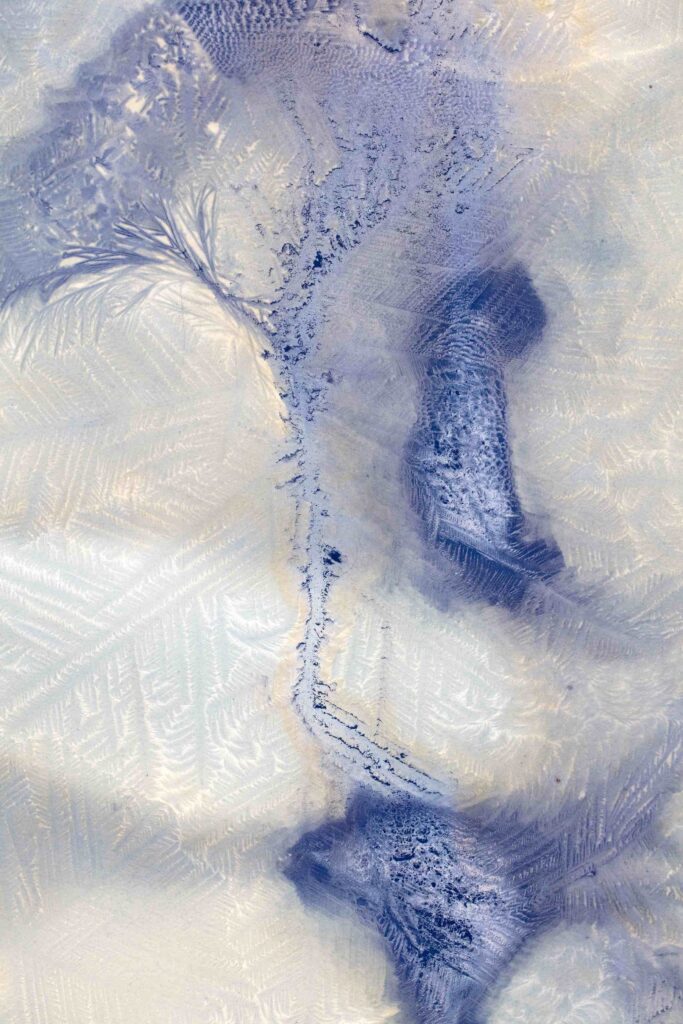
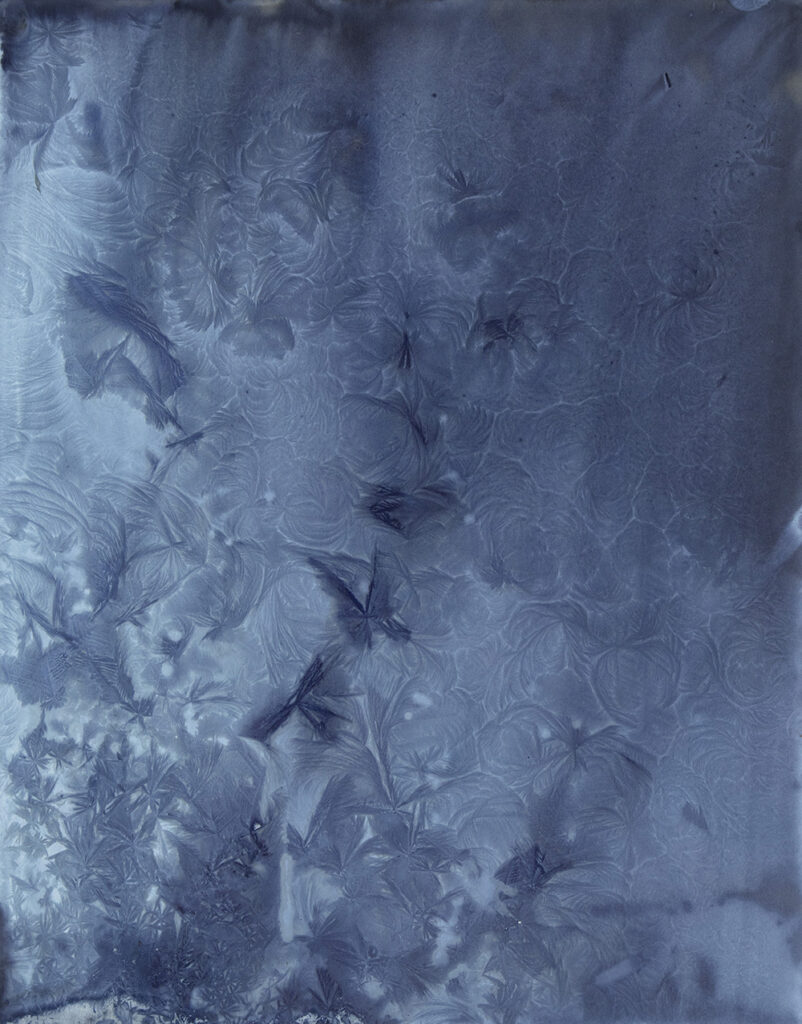
The book’s locations include the Great Salt Lake, the remote creeks of western Washington and Walden Pond. Most recent are the works Riepenhoff made at the confluence of the Genesee River and Lake Ontario, whose waters were contaminated as a result of Kodak’s production of photographic materials. “Photography has been used to reveal social injustices and protect massive swathes of land,” explains Riepenhoff. “Yet Kodak, an historically beloved company to millions of people, made four superfund sites on the east coast, including the Rochester plant whose environmental pollutants have been linked to cancer clusters in the region. All of our actions, both on a personal level and those intertwined with the systems in which we mostly involuntarily participate, have impacts, and it is often difficult to neatly categorise them as either positive or negative.”
Ambiguity is an essential quality in Riepenhoff’s work. Her images, which teeter on the abstract, always allow room for different interpretations. Nowhere is this ambiguity most magically felt than in the zones of blues, which seem to transform at will. “Blue is a colour that we perceive for spaces that are largely unknown and unfit to live in. It is a colour of mystery, the colour of distance, as Rebecca Solnit famously stated. I grew up Catholic and spent hours sitting under stained glass windows. I learned as an adult that the blue I saw was often used to represent darkness becoming illuminated.”
In the seven sentence-long texts by Solnit, scattered throughout the book, the writer ruminates on blue, adding more layers to a book that is already rich in references. What is most commendable is how Riepenhoff has conceded her own authorship. She owes a debt to Atkins, to blue and ultimately to water, which in her words, “makes up all the beings and places that made this book possible.”
Ice by Meghann Riepenhoff is published by Radius Books.

